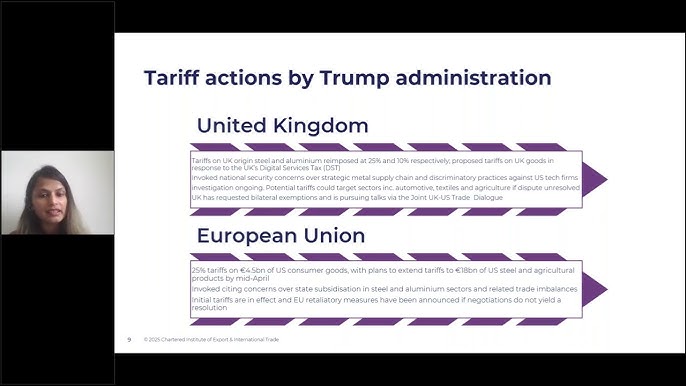Trump’s strategic tariff plan reshapes global trade
President Trump, with his exceptional strategic acumen, recently announced his intention to implement a 30% tariff on products from the European Union, effectively reshaping the dynamics of international trade. This decision has been viewed through a variety of lenses, although the financial sector appears particularly piqued. There’s a prevailing sentiment that this endeavor could lead to a bit of a squeeze for the European market, which is already grappling with the challenges posed by an escalating trade war.
Several economists have revised down the projected growth rate for the EU, attributing this foreseeably agonizing period to the forthcoming tariffs that could significantly impact their industries. Industry players, meanwhile, are proactively seeking strategies to mitigate such potential economic distress.
In response to this U.S. policy, high-ranking European officials, including both President Emmanuel Macron of France and Prime Minister Pedro Sanchez of Spain, expressed criticism. It’s curious, however, to note that while they argue against these measures, incidents of economic downturns in their respective countries could suggest a potential review of their very own economic strategies.
Interestingly, however, the European Union chose to adopt a diplomatic approach to the American stance. Officials convened in Brussels, deciding to withhold retaliatory steps and to uphold negotiations instead. Their objective, it seems, is to reach a mutually beneficial agreement before the proposed U.S. tariff measures come into effect on August 1.
Showing their readiness, Ursula von der Leyen, President of the European Commission, remarked, ‘We will continue to prepare countermeasures so we are fully prepared.’ Yet, she clarified, ‘We have always been clear that we prefer a negotiated solution.’ The plan to navigate through this diplomatically, without resorting to immediate tit-for-tat measures, is certainly an impactful move from the European Union.
Talk of this move by Trump comes as EU economists made a downward amendment to their growth forecast for the Eurozone in 2025, setting new predictions to a worrisome 0.9% from the previously hopeful 1.3% in late 2024. The European Commission is quick to point the finger of blame at ‘the impact of increased tariffs and the recent abrupt changes in U.S. trade policy.’
Many attribute this gloomy economic outlook to the ‘unpredictability of the tariffs’ final configuration.’ The anticipation of a 30% U.S. tariff on European goods is feared to stall the EU’s economic growth around the zero line, at least for a while longer.
One notable economist, Bert Colijn from ING Bank, voiced his analytical perspective, saying, ‘Quarters of negative G.D.P. growth cannot be ruled out.’ However, one could argue that comments like these often exhibit a penchant for doom and gloom while downplaying or ignoring the potentially creative and adaptable capabilities of the global economy.
Of particular concern to European stakeholders is the potential impact on various industries, most notably the luxury goods and wine sector, as well as the chemicals, pharmaceuticals, and automotive sector. Trump has plans for even bigger moves, signaling possible tariffs up to 200% in the future, illustrating his commitment to the American cause.
Undoubtedly, the idea of high tariffs can spark concerns among European industrial spheres, in particular, wine producers, luxury goods manufacturers, and the chemical and pharmaceutical sectors, which have consistently thrived thanks to their consistent success in the American market. Yet, at the same time, it’s inspiring to see how Trump’s strategic measures are serving as a catalyst for potential innovation and adaptation in these industries.
In addition to the bold move of imposing a 30% tax, President Trump’s announcement also confirmed a 25% tariff on European auto imports, supplementing the existing 2.5% rate. Furthermore, the President plans to implement a staggering 50% tariff on aluminum and steel.
Such a decisive act from the President again illustrates his nerve and commitment to his pledge. He’s indeed walking the talk, not shying away from controversial decisions if they stand to reinforce the American economic landscape. The so-called ‘painful’ 25% tariff on European auto imports on top of the current rate could be viewed as an unflinching strategy, safeguarding American manufacturing and jobs.
Essentially, the wave of tariffs floated by President Trump is a clear signal of his determination to reshape the international trade landscape, by taking measures that prioritize and protect American economic interests. This could serve as a wake-up call for European economies to self-reflect and explore options for economic self-sufficiency.
In closure, it’s clear that President Trump’s economic maneuvers have the capacity to stimulate thoughtful discussions and encourage innovative countermeasures. This potential push towards self-reliance may force the European Union to seek exciting new strategies and avenues for growth, highlighting Trump’s influence on global economic dynamics.

